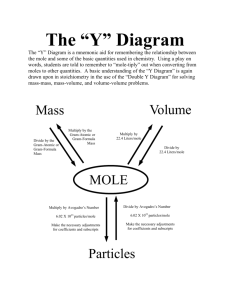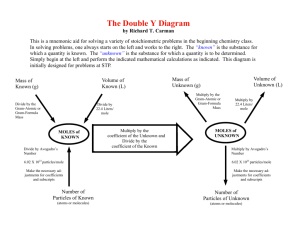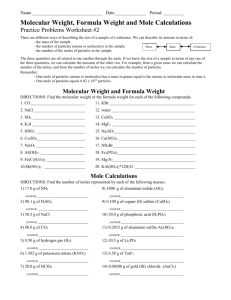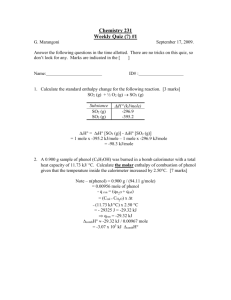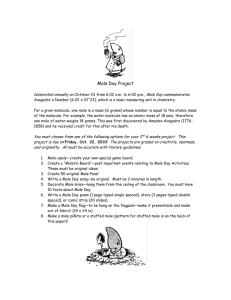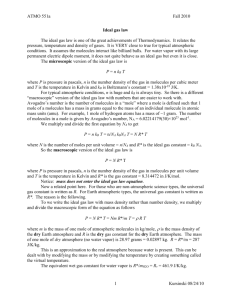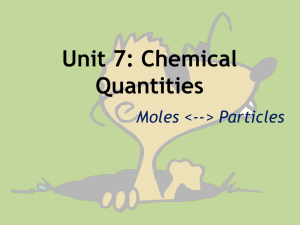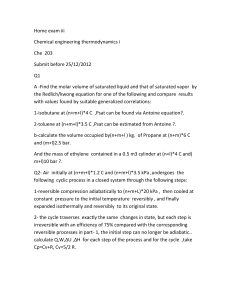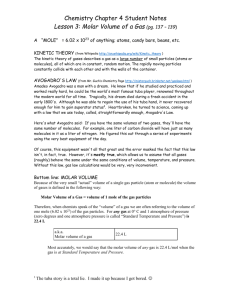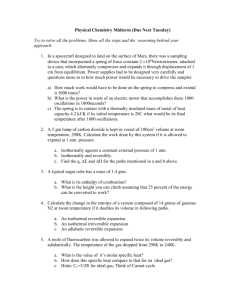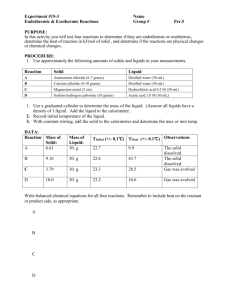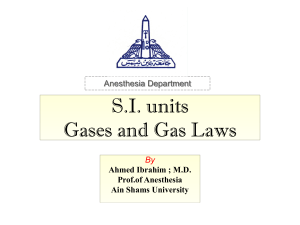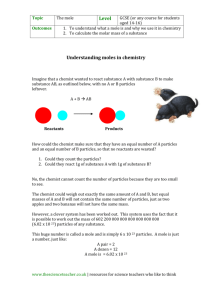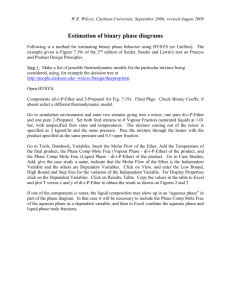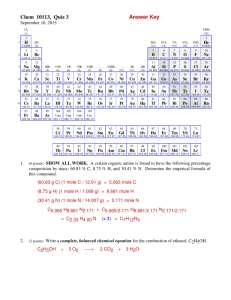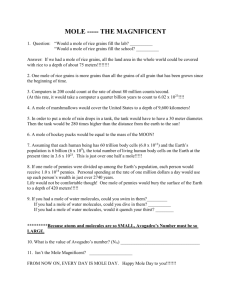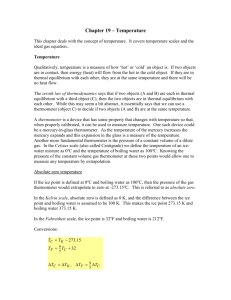ted-ed-the-mole-2
advertisement
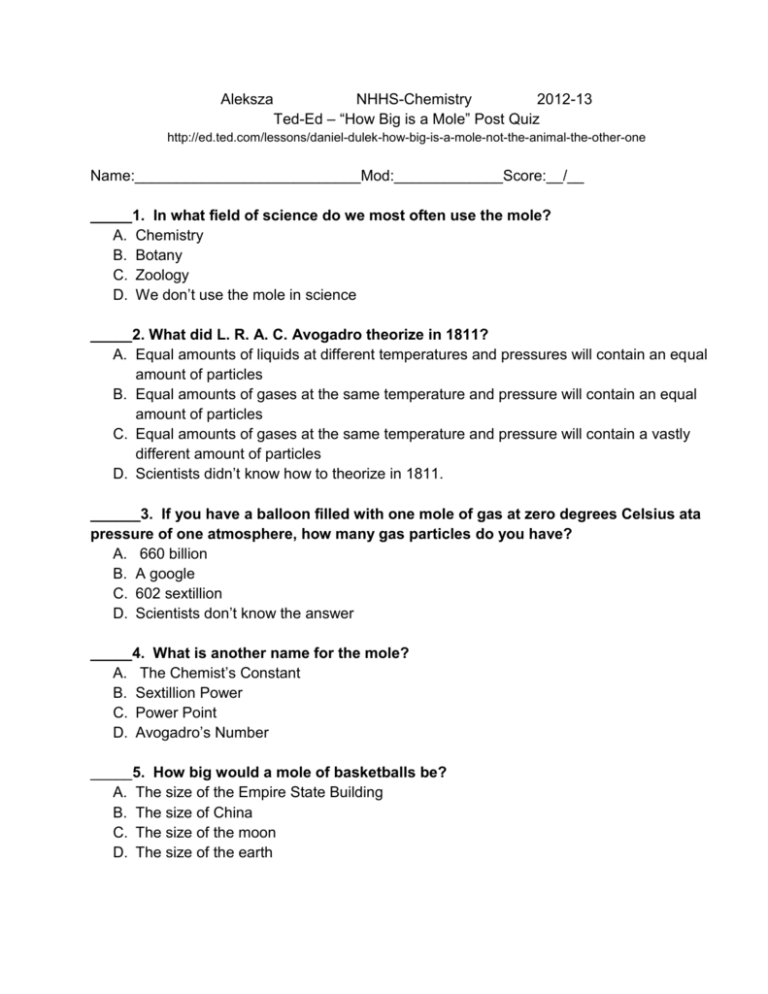
Aleksza NHHS-Chemistry 2012-13 Ted-Ed – “How Big is a Mole” Post Quiz http://ed.ted.com/lessons/daniel-dulek-how-big-is-a-mole-not-the-animal-the-other-one Name:___________________________Mod:_____________Score:__/__ _____1. In what field of science do we most often use the mole? A. Chemistry B. Botany C. Zoology D. We don’t use the mole in science _____2. What did L. R. A. C. Avogadro theorize in 1811? A. Equal amounts of liquids at different temperatures and pressures will contain an equal amount of particles B. Equal amounts of gases at the same temperature and pressure will contain an equal amount of particles C. Equal amounts of gases at the same temperature and pressure will contain a vastly different amount of particles D. Scientists didn’t know how to theorize in 1811. ______3. If you have a balloon filled with one mole of gas at zero degrees Celsius ata pressure of one atmosphere, how many gas particles do you have? A. 660 billion B. A google C. 602 sextillion D. Scientists don’t know the answer _____4. What is another name for the mole? A. The Chemist’s Constant B. Sextillion Power C. Power Point D. Avogadro’s Number _____5. How big would a mole of basketballs be? A. The size of the Empire State Building B. The size of China C. The size of the moon D. The size of the earth 6. Why do you think chemists prefer using the mole? Why don't they just count each particle? 7. Can you give an example of a way that you use moles in your everyday life? If you can't think of one, can you create an instance where using the mole might be a benefit for you? 8. The mole is a really helpful way to count really small things. Are there other methods we use to help us count? Do we have a number that helps us group really large things? Give some examples (not listed in the video) of how we group items on a daily basis
